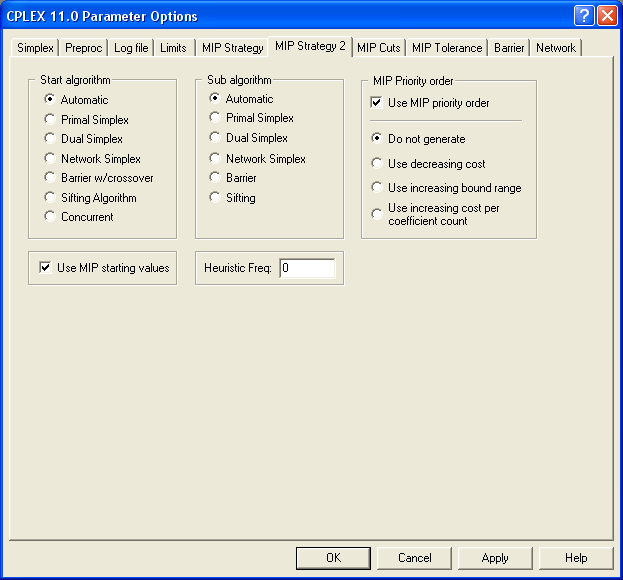
Figure 4.47: The CPLEX MIP Stategy2 Tab In CPLEX Options Dialog Box
You can further change the MIP Strategy2 options for CPLEX by choosing CPLEX parameters from the Options menu and then pressing the MIP Strategy2 tab. This will display the dialog box shown below:

Figure 4.47: The CPLEX MIP Stategy2 Tab In CPLEX Options Dialog Box
| Option Name | MPL Name | Solver Param | ParamNr | Type | Default | Min | Max |
|---|---|---|---|---|---|---|---|
| Crossover Strategy | MipCrossoverStrategy | MIPHybAlg | 2043 | list | 1 | 1 | 2 |
| Use Advanced Starting Values | MipStartingValues | MIPStart | 2035 | flag | 1 | 0 | 1 |
| Reduced Cost Fixing | MipReducedCostFixing | RCFixInd | 2021 | flag | 1 | 0 | 1 |
| Scan For SOS | MipSosScanIndicator | SOSInd | 2023 | flag | 0 | 0 | 1 |
| Rounding Heuristic | MipHeuristicStrategy | Heuristic | 2011 | list | 0 | -1 | 1 |
| Rounding Heuristic Frequency | MipHeuristicFrequency | HeurFreq | 2031 | int | 0 | -1 | MAXINT |
| Start Algorithm | MipStartAlgorithm | StartAlg | 2025 | list | 1 | 1 | 6 |
| Sub Algorithm | MipSubAlgorithm | SUBAlg | 2026 | list | 2 | 1 | 6 |
Chooses whether to employ Primal or Dual crossover when using Barrier for subproblems.
Used to indicate how the MIP advanced starting values are used at node 0. When set to On indicates that the values should be checked to see if they provide an integer feasible solution before starting optimization.
This option determines whether the reduced cost fixing strategy is to be applied. Reduce cost fixing sets integer values to bounds by considering reduced cost information at subproblems. This technique can significantly improve MIP performance, but can increase memory usage. By default, reduce cost fixing is On, but can be turned off as a memory-saving measure.
The Scan for SOS option, when set to On, initiates a scan for SOS Type 3 sets and invokes SOS Type 1 branching for these sets of variables. The automatic scan occurs immediately before CPLEX starts optimizing. An SOS Type 3 set results from each equality row with all binaries and +1 or -1 coefficients, and an RHS value of 1 - (number of -1 coefficients). SOS Type 3 sets are a special subset of SOS Type 1 sets which can be identified automatically by CPLEX. The default value for the Scan for SOS option is Off.
The Rounding heuristic option determines which heuristic should be applied to develop an initial integer solution.
| Do not use heuristic (-1) | Do not use a rounding heuristic. |
| Automatic (0) | The decision on using a heuristic will be automatically determined by looking at the solution to the initial relaxation of MIP. |
| Use heuristic (1) | Rounding heuristic should be used. |
The heuristic frequency options determines how often to apply the periodic heuristic. Setting the value to 0, the default, indicates that the periodic heuristic will not be applied at any nodes.
The Start algorithm option determines which LP algorithm should be used to solve the initial relaxation of the MIP.
| Automatic (0) | CPLEX Chooses. |
| Primal simplex (1) | Use primal simplex |
| Dual simplex (2) | Use dual simplex. |
| Network simplex (3) | Use network simplex. |
| Barrier (4) | Use barrier. |
| Sifting Algorithm (5) | Uses sifting the sifting algorithm. |
| Concurrent (6) | Uses numerous start algorithms concurrently. |
The sub algorithm option sets the algorithm to be used on subproblems.
| Automatic (0) | CPLEX Chooses. |
| Primal simplex (1) | Use primal simplex |
| Dual simplex (2) | Use dual simplex. |
| Network simplex (3) | Use network simplex. |
| Barrier (4) | Use barrier. |
| Sifting Algorithm (5) | Uses sifting the sifting algorithm. |